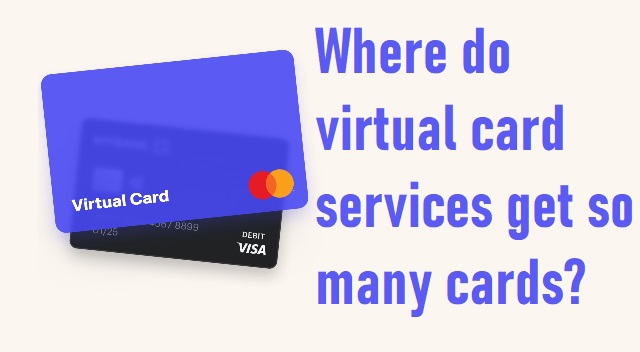
The whole truth about where card providers get their virtual cards and why they all have hidden commissions. At the end of the article, we will debunk the myth about suspicious payment issues.
Let’s start from the beginning: where do virtual card services actually get so many cards? There are two main paths for this, which subsequently determine both the vector of payment system development and the breadth of their product range.
Most services on the market sign contracts with banks in the following way: they present themselves to the bank as a marketing agency planning to issue cards for their employees for advertising purposes. And the bank can issue virtual cards in an unlimited quantity for them. It sounds simple, but in reality, the provider will have to prove to the bank that the agency actually exists, show social media accounts, and possibly confirm volumes.
The second path is the creation of a financial organization. The term MSB (Money Service Business) was coined by financial regulators to describe businesses engaged in financial activities and licensed. The main difference is that MSB enters into a contract with the bank and, after the necessary KYC and KYB checks, can issue an unlimited number of virtual cards on behalf of the financial platform. In the arbitrage market, we are familiar with only one service with a license from the Canadian MSB – PSTNET.
Why do some card providers offer cards only for advertising, while others – for anything else?
Hence the difference in the product line of virtual cards. If cards are issued in the name of an advertising agency, the bank or another provider restricts MCC codes to advertising and near-advertising to exclude unauthorized use of the cards. If cards are provided by a financial organization, the scope of card usage can be broader.
An exception is perhaps only for high-risk merchants like dating, betting, and gambling. Here, the question is not only about restrictions from the bank but also about whether the payment service is ready to take responsibility for potential scammer clients. Considering all the complex checks required for obtaining a license, virtual card services rarely provide cards for such MCC services. Let’s move on to more practical questions:
Why do some cards trigger pre-authorization declines, while others do not? Debunking the myth about risk payments
The most common concern for affiliates regarding cards is overused BINs. Why do suspicious payment issues occur on some BINs and not on others? Practice and statistics show that if you take one card and link it to three different accounts, depending on the geography, currency, and proxy on the account, the card will show different results. However, in this case consumer is the king, and that’s why in their marketing campaigns, payment systems repeatedly talk about ‘new, unused BINs’ and add new positions to their product line. Speaking of something new: adding a BIN that existed in principle at the bank but was not in the payment system is not difficult. And, of course, it can be called ‘new’. With a stretch.
But releasing an absolutely new six-digit BIN is indeed challenging. However, it is possible if the card platform is large enough. Since VISA and Mastercard has already stopped issuing 6-digit BINs, few have managed to jump on the last train and release something exclusive. The PSTNET team secretly shared with us that they have obtained one such BIN.
Returning to the initial question: if burnt BINs are one of the advertisement myths, why do payment systems try to regularly add new positions? Marketers mostly work on volumes with Facebook and Google. Unfortunately, advertising accounts on both of these platforms are unstable. That’s why it’s important for an pro to have a wide range of tools on hand to immediately filter out non-working options for various reasons and start with the cards that are linked. Therefore, services promising 40+ BINs with the slogan ‘no more risks’ are somewhat right. Among 40 options, it is much easier to find a suitable one than among three.
Completely honest about all hidden fees
Since we’re being open today, let’s talk about fees too. What’s the difference between a card for a dollar and a card for $10? In everything and in nothing at the same time.
The cost of cards depends not only on the service’s agreements with the bank but also on the type of card, its GEO, currency, and status. Naturally, card platforms compete to offer customers the cheapest price. At the same time, the business must generate profit, right? Therefore, the cost of issuing cards includes operational expenses: maintaining development, support, marketing, and design departments. And, of course, with large turnovers, services are willing to offer more favorable conditions for cards and their top-up fees.
Why do some platforms introduce transaction fees while others do not? Let’s reveal the secret: fees for international payments and processing are always charged by payment systems. The difference between services lies only in the fact that some hide them in other fees, while others pass them on directly. If you think your card doesn’t have this, it means you’re paying it, but it’s nicely disguised elsewhere. And no card provider will take on the commissions of VISA/Mastercard. It’s not profitable.

